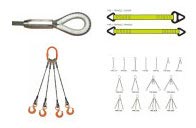Most industrial applications rely, in some respect, on rigging as a means of relocating heavy loads and equipment. In short, it is a means of transporting gear that human hands cannot. Many businesses rely on material handling as a means of operation, but the most critical aspect of rigging should always be the safety of workers. The number one cause of lifting accidents is human error, whether due to negligence, laziness, or ignorance. When loads are inappropriately rigged, it can occur in an accidental slip that causes property and human damage. In worst-case scenarios, people can die. 
The most important thing to ensure rigging is done safely and effectively without compromise is that only qualified workers are tasked with rigging. Employees should be fully certified in rigging safety and all OSHA safety requirements. They are trained, so professional rigor senses and responds to problems before they ever happen.
There are three other important things associated with creating a safe environment for material handling.
Be mindful of the environment and the status of equipment. Inspections should be conducted frequently on cranes and other material handling equipment such as rigging supplies. No technical issues are too small because it is often the small things that lead to severe accidents. You need to be fully aware of the status of your equipment and the surrounding environment and operate within.
Regardless of what is being carried, all loads need to be balanced. As loads become unbalanced, they often lead to cranes tipping. To help reduce this issue, it is essential to use riggers and spotters that perform standard and regular safety checks before lifting ever occurs.
Safety starts with using your equipment, but it does not end there. How equipment is maintained and stored while not in use is almost as important as how long it is used. Rigging supplies must be kept in safe environments where they cannot be damaged or destroyed by environmental conditions or other hazards.
Related Reading Crane Wire Rope